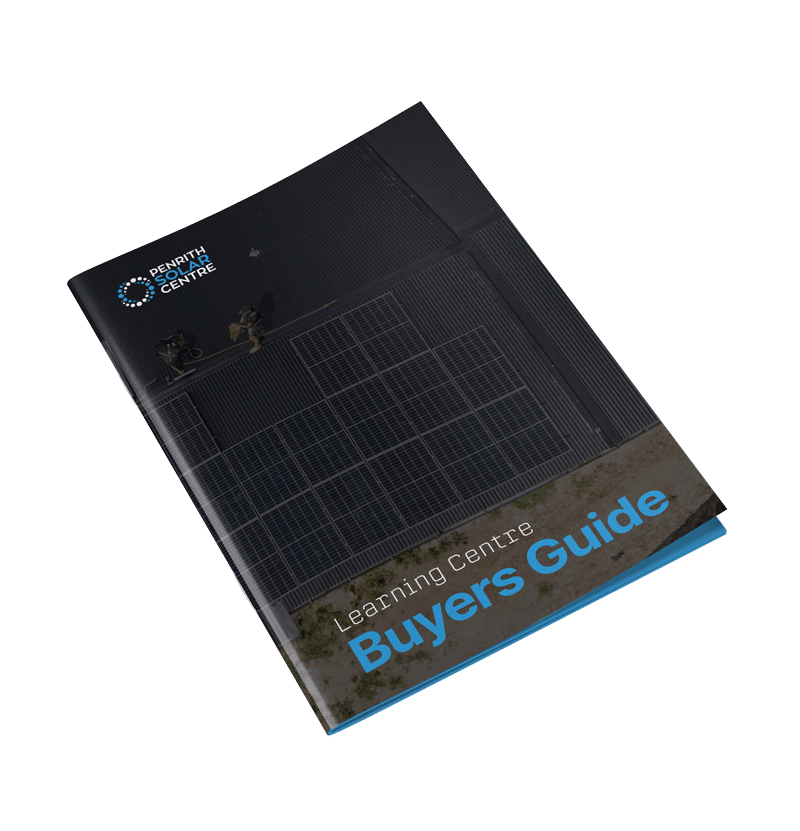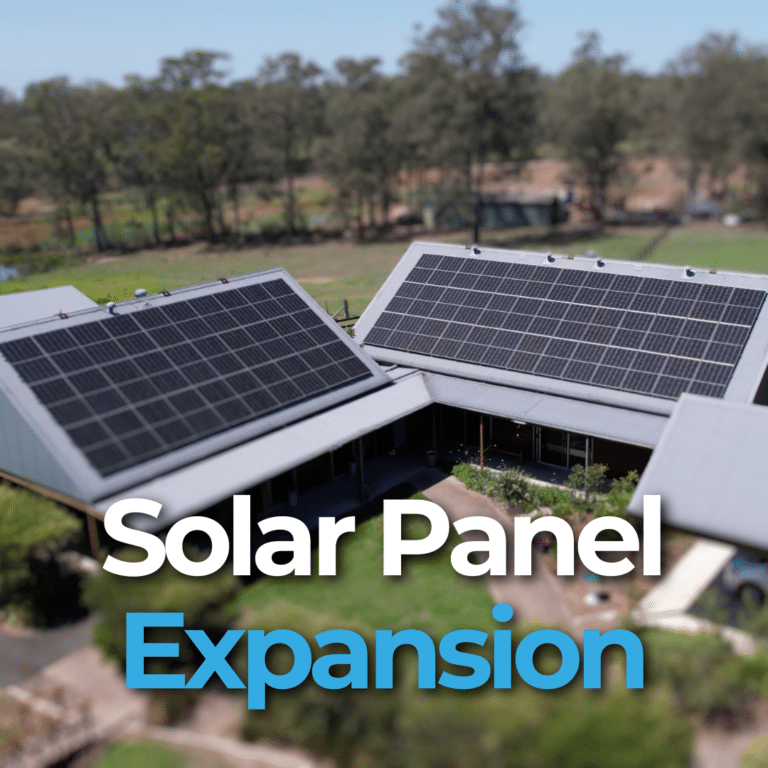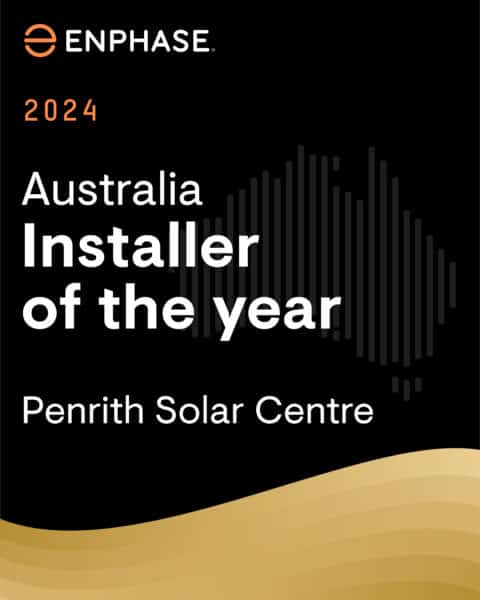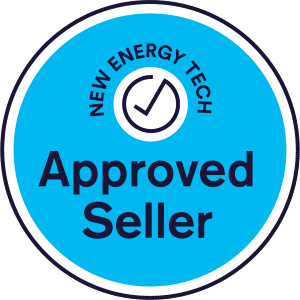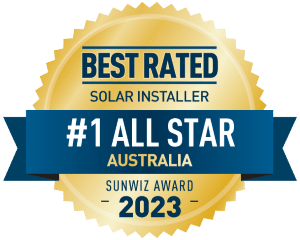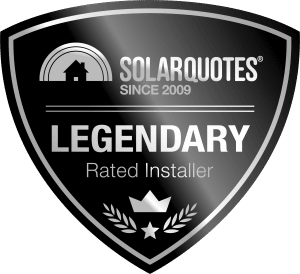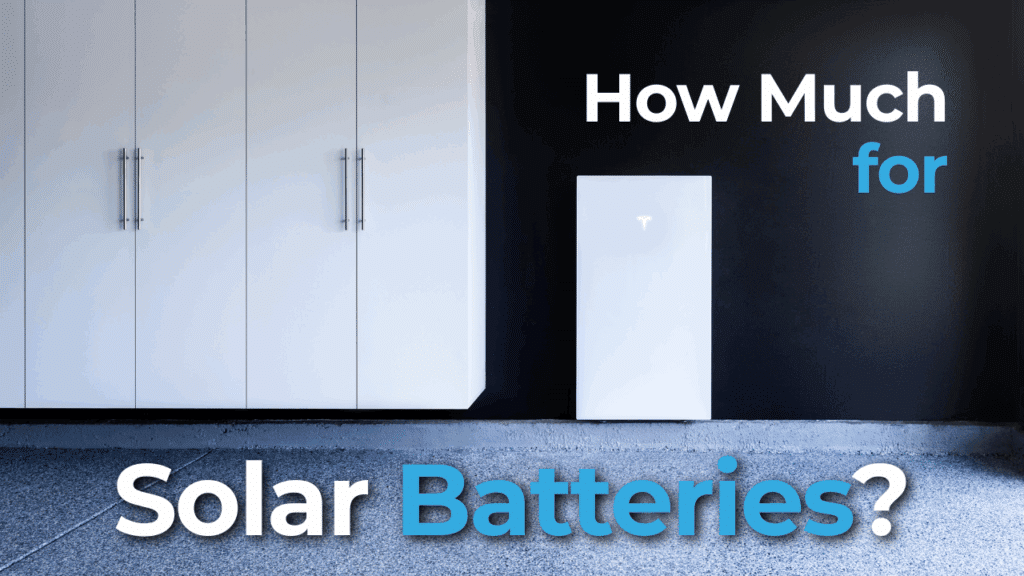
A solar battery helps store extra energy from your solar panels. This energy runs your home at night or during a blackout. It can also help you avoid buying expensive power from the grid.
A solar battery is the key to lowering your energy bills to near zero.
But how much do they cost?
At PSC Energy, we know a thing or two about solar batteries. We install dozens of them every week. This year, we’ve seen a federal battery rebate brought forward by the government. The batteries we install at PSC Energy are the Enphase IQ Battery 5P, the Tesla Powerwall 3, and the Sigenergy SigenStor.
In this article, you’ll learn about the following:
- What Is the Price of a Solar Battery in 2025?
- How Does Installation Type Affect Price?
- What About Battery Warranties and Lifespan?
- How Much Solar Battery Storage Do You Need?
- What Solar Battery Rebates Are Available?
- Which Battery Offers the Best Value?
By the end of this article, you’ll understand the cost of all three batteries we install, information about how each solar battery performs, and some insight into choosing the right one for your home.
Let’s break down everything you need to know.
What Is the Price of a Solar Battery in 2025?
Here are the current battery prices at PSC Energy. These numbers include installation, all required components, and the rebate amount already deducted.
- Enphase IQ Battery 5P (x2 = 10kWh): $13,443
- Tesla Powerwall 3 (13.5kWh): $13,432
- SigenStor (16 kWh x 2): Starting at $13,250 for battery and inverter blocks with $2, 488 for additional battery blocks sold separately.
Please note: these prices are only for the battery installation only (AC-coupled). The prices will be higher for a complete energy system through Sigenergy or Tesla because they include things like solar panels.
You might look at these numbers and wonder why the prices vary from product to product. The reason lies in how each battery works, what technology it uses, how it is installed, and what kind of support or warranty it comes with.
The Enphase IQ Battery 5P, for example, has six microinverters built inside each unit. These microinverters convert electricity directly, providing added safety, performance, and reliability.
They are easy to replace when one needs repair, and because there’s more than one in each unit, your battery will continue working through potential malfunctions. This is the art of decentralisation.
That design is more expensive to build and install but pays off with long-term system health and excellent monitoring.
Tesla’s Powerwall 3 can be retrofitted to an existing system, but its real value comes when it’s installed with solar panels. That’s because the Powerwall 3 includes a built-in hybrid inverter.
When installed as a new solar-plus-battery system, this two-in-one approach saves money on hardware and labour. However, it is less efficient if it has to work alongside existing microinverters, so the price goes up in retrofit scenarios.
Sigenergy SigenStor is the most affordable of the three upfront. That’s because its modular design uses stackable 8kWh blocks that pair with a single inverter on top. It’s easier to install, works well with three-phase power, and scales nicely with your energy needs.
Its price reflects both the simplicity of its system and the economies of scale possible through its stacking design.
These prices also change depending on your home’s setup. Adding a battery to an older system may cost more because of rewiring, switchboard upgrades, or meter replacements.
Installing a battery as part of a new and complete energy system often saves money. You can combine labour, streamline hardware, and access larger rebates. That’s why many of our customers choose to install everything at once. It delivers better value over time and avoids extra installation costs down the road.
If you’d like to learn a bit more about what solar batteries are on the market, you might want to check out the following article titled, 6 Best Solar Batteries on the Market.
Power up your savings. Click here.
How Does Installation Type Affect Price?
There are two ways to install a battery:
DC-coupled: The battery is wired directly to the solar panels before the power ever reaches your home’s electrical system. This setup is more efficient because the energy only gets converted once, from DC to AC, right before it is used in your home.
It allows for smoother charging, faster response, and better integration with the system as a whole. DC-coupled systems also benefit from greater oversizing potential for your solar panels, which can increase your federal solar rebate.
Enphase is an AC-coupled system, which we’ll get to shortly. Our two DC-coupled complete energy systems include solar panels along with other components. The price for these complete energy systems, as mentioned before, is higher because of these extras.
Here is the starting cost of each system when DC-coupled:
- Sigenergy SigenStor: $18,283.
- Tesla Powerwall 3: $17,950.
This is an exceptional value for each energy system. Bundling solar panels, inverter, and battery all in one saves more over time.
AC-coupled: The battery connects to the switchboard downstream from the inverter. This means solar power is first converted from DC to AC for household use, and then any leftover power gets converted again from AC back to DC to be stored in the battery.
When that stored power is needed, it gets converted from DC back to AC once more. These extra steps mean some energy is lost along the way. AC-coupled systems are still very effective and are easier to add to existing solar systems because they do not require changes to the original inverter setup.
Tesla Powerwall 3 works both ways. It can use DC coupling for better efficiency and value if you install it with new solar panels. If you add it to a home that already has solar, the system must be AC-coupled. That adds to the complexity of the job and usually raises the cost. Same goes for SigenStor.
Choosing between AC and DC coupling depends on your home’s current system, how much you plan to install at once, and whether maximum efficiency or easy installation is your priority. We walk every customer through these options to make sure they’re getting the right solution for their needs.
If you’re interested in learning about types of solar batteries, you might want to check out the following article titled, AC-coupled Battery vs. DC-coupled Solar Batteries.
Let’s talk solar savings. click here.
What About Battery Warranties and Lifespan?
A solar battery is a long-term investment, so it is important to know how long it will last and what protection it comes with. PSC Energy only offers batteries with strong performance and long warranties. Here’s what each brand offers:
- Enphase IQ Battery 5P: 15-year warranty or 6,000 cycles.
- Tesla Powerwall 3: 10-year warranty with unlimited cycles if connected to the internet.
- Sigenergy SigenStor: 10-year warranty or 32.85MWh of throughput.
The term “cycle” refers to a full charge and discharge of the battery. If your battery charges and discharges once per day, 6,000 cycles equals over 16 years of use. Most homes do not cycle their batteries that often, which means they may last even longer than their warranties promise.
The Enphase battery stands out because it uses six microinverters inside each unit. This design gives it a significant reliability advantage. If one microinverter fails, the other five keep the battery running. This helps prevent full system shutdowns and keeps your energy flowing until repairs can be made.
Tesla and SigenStor use a central inverter built into the system. That means if the inverter fails, the entire battery system stops working until it’s fixed or replaced. While both systems are built with strong quality controls, this central point of failure is something to consider if you focus on long-term reliability.
The longer warranties and modular architecture of the Enphase IQ Battery 5P make it ideal for homeowners looking for maximum peace of mind and fewer service calls.
On the other hand, the Powerwall 3’s unlimited cycles (when connected online) offer solid flexibility for high-usage homes, and the SigenStor’s simplified design makes service and scaling more straightforward.
Each has its strengths. The best fit depends on your goals, your setup, and how long you want your system to run without interruption.
If you’re interested in learning a bit more about the warranties for the products we install, you might want to check out the following article titled, A Complete Guide to Solar Warranties.
Ready to go solar? Click here.
How Much Solar Battery Storage Do You Need?
The right battery size depends on how much electricity your home uses and how often you use it. Picking the right size makes sure you store enough solar energy during the day to power your home at night or during cloudy weather. Here are some general guidelines based on typical Australian homes:
- Small homes or energy-efficient households: 8kWh can be enough. If you have LED lighting, energy-saving appliances, and low evening usage, a single SigenStor battery may cover your needs.
- Average family homes: 10kWh to 13.5kWh works well for most households with two to four people, a fridge, air conditioning, and regular evening power use. This setup often includes one Powerwall 3 or two Enphase batteries.
- Larger homes or homes with three-phase power: 16kWh to 27kWh or more may be needed if you run pool pumps, electric vehicle chargers, ducted air conditioning, or have high daytime and nighttime usage. These homes often require stacking multiple Powerwalls or SigenStor units.
All three battery systems we install at PSC are scalable but they scale differently.
The SigenStor is stackable in blocks. This means you can install one unit now and add more later as your needs change.
With Enphase, the system expands in 5kWh steps. You can start with one IQ Battery and add more over time as your lifestyle evolves, or your household grows.
Powerwall stacks in a similar way, but in 13.5kWh units.
We often recommend that customers think a few years ahead. If you plan to buy an electric vehicle, add a granny flat, install a pool, or just want to get off the grid as much as possible, it’s smart to oversize now.
Batteries last over a decade, and energy use almost always grows. Starting with the right size ensures you get maximum value and avoid paying extra for a rushed upgrade later.
When we help you size your battery, we also look at your energy usage patterns. For example, a bigger battery makes more sense if you use most of your power after sunset.
However, if you’re home during the day because you’re retired or work from home and only use small amounts at night, a smaller system will do the job just fine.
Getting the size right is one of the most important parts of designing your solar battery system. It affects everything else: your payback period, how much you save, how much backup you get, and how happy you’ll be with your decision five years down the track.
If you’d like to learn more about the price of a Powerwall 3, you might want to check out the following article titled, How Much Does a Tesla Powerwall 3 Cost?
Get started with solar. Click here.
What Solar Battery Rebates Are Available?
There are two major battery rebate programs available in 2025 for homeowners in New South Wales. These rebates lower the upfront cost of installing a solar battery and improve the payback period.
Federal Solar Battery Rebate
The new federal solar battery rebate begins in July 2025. It works much like the existing STC rebate for solar panels, but it applies to battery storage capacity instead of solar generation.
Here’s how the rebate works:
The new rebate gives Australians an upfront discount of around $370 per kilowatt-hour of usable battery capacity. After fees, it should be around $350 per kWh industry-wide.
It applies to systems sized between 5kWh and 50kWh. That includes:
- Batteries added to existing solar systems.
- Batteries included in new solar installations.
- Batteries added onto existing solar and battery sites.
If you have solar with a battery and want more storage, you’ll receive a discount for that, too.
The battery must be switched on or after 1 July 2025. We’ll install it for you and switch it on after 1 July.
This rebate is designed to reduce grid pressure, lower energy bills, and accelerate battery adoption nationwide.
It works like the solar STC rebate: installers apply it upfront and claim it on your behalf.
Key rules:
- You can only claim the rebate once. No additional batteries later.
- It only applies to VPP-ready batteries on the approved product list.
- Accredited providers must install batteries.
- The rebate reduces each year until 2030 and ends that year.
NSW Battery Rebate
The New South Wales battery rebate already exists and runs alongside the federal one. Here are the specs:
New VPP Incentive Begins, NSW Battery Rebate Ends
The NSW Government has quietly confirmed that its upfront battery rebate, officially known as the Home Battery Installation Incentive, will end on 30 June 2025. After that, it’s being replaced by an expanded Virtual Power Plant (VPP) incentive starting 1 July 2025.
Key Dates and Limitations
- NSW battery rebate ends on 30 June 2025.
- Federal battery rebate begins on 1 July 2025.
- You cannot claim both for the same battery install.
- NSW attempted to make the two rebates stackable but ultimately failed.
What This Means for Homeowners
- You can still technically apply for the NSW rebate until the end of June 2025.
- But in most cases, it now makes more financial sense to wait for the federal battery rebate.
- The NSW rebate program, despite over 11,400 installations, has struggled with rollout issues and limited availability.
Changes to the NSW VPP Incentive
- The previous VPP structure paid households twice: once when joining and again three years later.
- From 1 July 2025, the program shifts to a single upfront payment of up to $1,500, based on battery size.
- Example payments include:
- ~$550 for a 10kWh battery
- ~$1,500 for a 27kWh battery
- Estimated at roughly ~$55 per usable kWh
- Batteries must be between 2–28kWh to qualify.
- The VPP incentive can be claimed alongside the federal battery rebate.
- If you already own an eligible battery, you may still qualify for the VPP incentive by enrolling through an Accredited Certificate Provider (ACP).
These rebate programs make batteries more affordable and help speed up your return on investment. They also help homeowners shift away from grid reliance and move toward full energy independence. If you’ve been waiting for the right time, 2025 is shaping up to be your window.
If you’re interested in learning a bit more about solar and battery rebates in NSW, Australia, you might want to check out the following article titled, Ultimate Guide to Australia’s 2025 Solar Rebate and Battery Rebate: Federal and NSW Rebate for Solar.
Let’s go solar today. Click here.
Which Battery Offers the Best Value?
Now that we’ve covered price, performance, and rebates, let’s look at what each battery offers in real-world value.
The Enphase IQ Battery 5P is an excellent match for homeowners who already have or plan to install an Enphase solar system. Its big advantage is reliability. With six microinverters in each unit, the battery has no single point of failure.
The 15-year warranty and detailed monitoring app give you peace of mind and deep visibility into your system’s performance. It’s a premium battery at a premium price, but it’s built to last and delivers the highest safety and system resilience.
The Tesla Powerwall 3 shines brightly when installed as part of a brand-new solar and battery system. That’s because it includes a hybrid inverter inside the unit, which means fewer components to install and a more streamlined design.
Powerwall 3 offers better efficiency and faster payback when DC-coupled to solar panels. It can back up your home in a blackout (single-phase homes) and deliver up to 10kW of continuous power. That’s plenty for running your fridge, lights, internet, and even a few heavy appliances. Three-phase homes have different requirements, and Powerwall has some backup limitations on these sites.
It also scales up easily with more units. For many households, especially single-phase homes, it hits the sweet spot between performance and price.
SigenStor by Sigenergy is the newest of the three but offers the most flexibility, especially for homes with three-phase power. Its modular stack design lets you add storage over time as your needs grow.
It’s also the only one of the three that supports full three-phase backup right out of the box. That means it can power your whole home, not just one section, during an outage. It’s a strong choice if you have large appliances, EV chargers, or more demanding electrical setups.
Each battery we carry at PSC is designed for a specific kind of homeowner. Some people want maximum control and safety, others want strong backup power at the best price, and others need a system that can grow over time.
The right choice depends on your goals, your current system, and how much energy you want to control. That’s why we don’t sell one-size-fits-all solutions. We tailor every system to you.
If you’d like to learn a bit more about the cost of SigenStor, we recommend you check out the following article titled, How Much Does the Sigenergy SigenStor Cost?
What Should You Do Next?
If you’re seriously thinking about adding a battery to your solar system or starting from scratch, a few simple steps can help you make the right choice.
- First, find out how much energy you use at night. Batteries store energy for the times your solar panels aren’t producing power, like evenings or cloudy days. Knowing your nighttime usage gives you a clearer idea of how big your battery needs to be.
- Next, think about what you want from your battery during a blackout. Do you want to power just the essentials, like the fridge and Wi-Fi? Or do you want to keep everything running?
- Also, be sure to talk to your installer about rebate eligibility. Not all batteries qualify for the NSW or federal battery rebates, and not all installers are certified to offer them.
Solar batteries aren’t cheap. But they offer serious value over time. They lower your energy bills. They protect you from blackouts. They make your home more efficient and more independent. And they do it quietly, behind the scenes, year after year.
If you want more control over your energy, a battery is one of your smartest moves.
And with rebates in place right now, it makes even more sense to act soon. Waiting could mean missing out on thousands in upfront savings.
At PSC Energy, we’re here to help you figure out if a battery is right for your home, your goals, and your budget. That’s what we do every day.

If you’re interested in learning a bit more about the federal solar rebate, also known as the Federal Cheaper Home Batteries Program, you might want to check out the following article titled, What the 2025 Federal Election and the Government Rebate Means for Solar Batteries in Australia.

